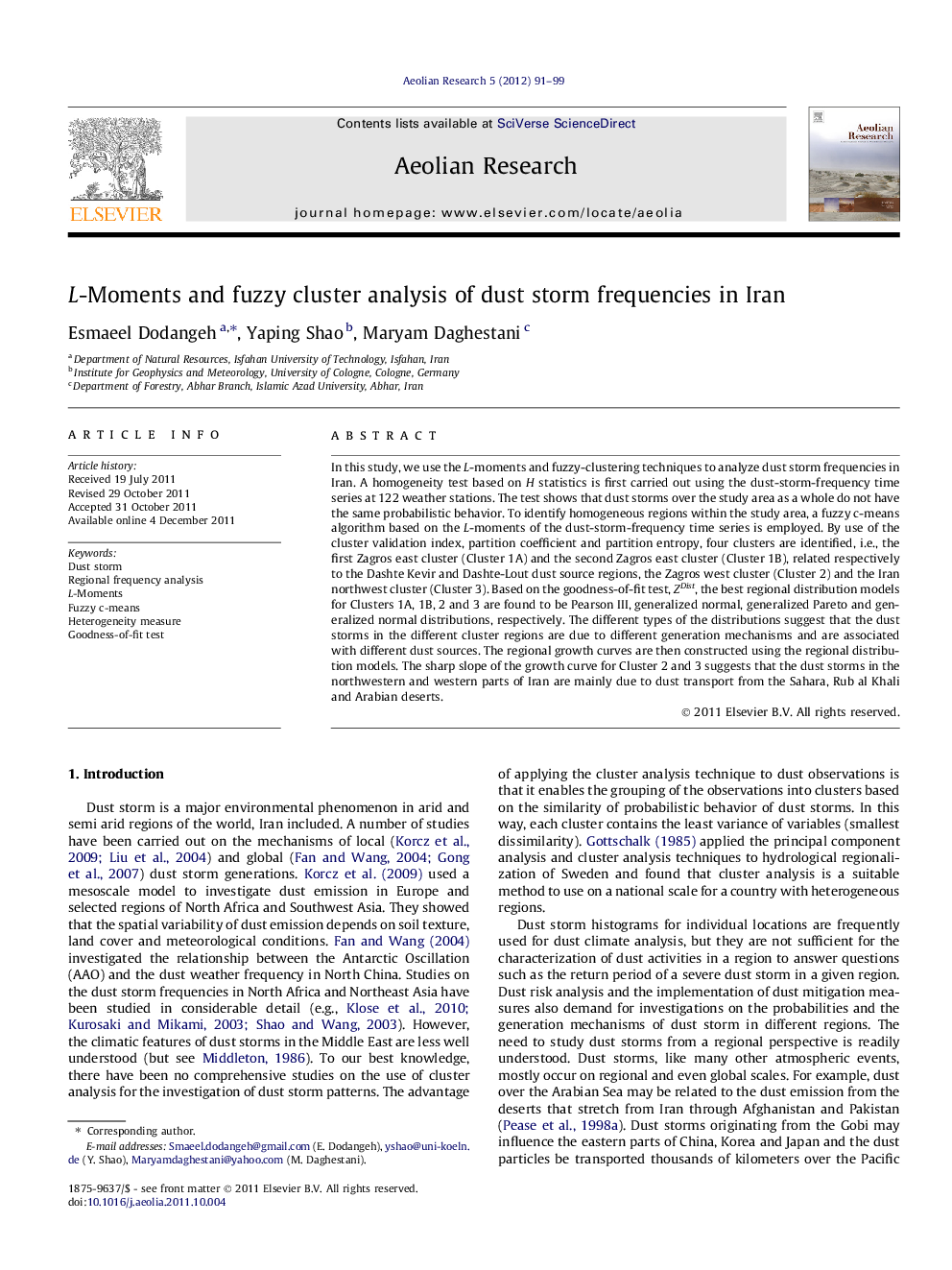| کد مقاله | کد نشریه | سال انتشار | مقاله انگلیسی | نسخه تمام متن |
|---|---|---|---|---|
| 4673951 | 1634122 | 2012 | 9 صفحه PDF | دانلود رایگان |

In this study, we use the L-moments and fuzzy-clustering techniques to analyze dust storm frequencies in Iran. A homogeneity test based on H statistics is first carried out using the dust-storm-frequency time series at 122 weather stations. The test shows that dust storms over the study area as a whole do not have the same probabilistic behavior. To identify homogeneous regions within the study area, a fuzzy c-means algorithm based on the L-moments of the dust-storm-frequency time series is employed. By use of the cluster validation index, partition coefficient and partition entropy, four clusters are identified, i.e., the first Zagros east cluster (Cluster 1A) and the second Zagros east cluster (Cluster 1B), related respectively to the Dashte Kevir and Dashte-Lout dust source regions, the Zagros west cluster (Cluster 2) and the Iran northwest cluster (Cluster 3). Based on the goodness-of-fit test, ZDist, the best regional distribution models for Clusters 1A, 1B, 2 and 3 are found to be Pearson III, generalized normal, generalized Pareto and generalized normal distributions, respectively. The different types of the distributions suggest that the dust storms in the different cluster regions are due to different generation mechanisms and are associated with different dust sources. The regional growth curves are then constructed using the regional distribution models. The sharp slope of the growth curve for Cluster 2 and 3 suggests that the dust storms in the northwestern and western parts of Iran are mainly due to dust transport from the Sahara, Rub al Khali and Arabian deserts.
► This study presents a statistic analysis of the dust storm frequencies in Iran.
► Dust-storm statistics are not homogeneous in the study area.
► Four homogeneous regions of dust activities, or clusters, are identified.
► The regional growth curves show higher dust-storm frequencies in the western parts.
Journal: Aeolian Research - Volume 5, August 2012, Pages 91–99